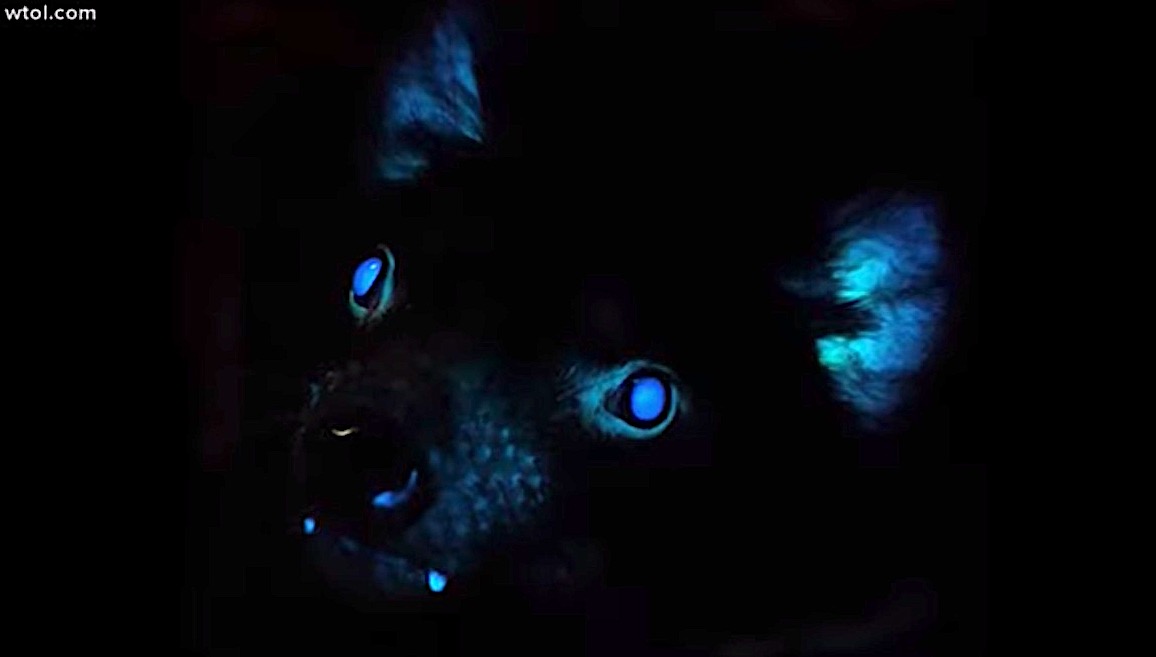Researchers discover the platypus isn't the only mammal that glows fluorescent


After researchers reported in October that the platypus, along with its other unique characteristics, glowed a psychedelic blue-green under black light, "others have begun their own investigations, mostly in Australian mammals," The New York Times reports. "Although results are preliminary, the findings suggest we may have to book a larger venue for the mammal rave."
At the Western Australian Museum, curator of mammals Kenny Travouillon borrowed a black light from the scorpion department and started looking for biofluorescence in their preserved mammal specimens. He found orange and green accents in endangered marsupials called bilbies, bright white glowing in the quills of hedgehogs and porcupines, and signs of fluorescence in one of two species of wombat. "Kangaroos didn't seem to do very much at all," he added.
Jake Schoen, a conservation technician at the Toledo Zoo, tested the zoo's preserved platypus specimen then used a specially modified camera to photograph live Tasmanian devils. "The tricky part was having them sit still for a fraction of a second," he said, but when he did manage that with one of the animals, he captured a blue glow around her eyes, ears, and whiskers. "Presumably all of its skin is fluorescent," Schoen said.
The Week
Escape your echo chamber. Get the facts behind the news, plus analysis from multiple perspectives.

Sign up for The Week's Free Newsletters
From our morning news briefing to a weekly Good News Newsletter, get the best of The Week delivered directly to your inbox.
From our morning news briefing to a weekly Good News Newsletter, get the best of The Week delivered directly to your inbox.
Though the discovery of biofluorescence in a wider variety of mammals than previously known is exciting — opossums and flying squirrels also glow under black light — researchers don't yet know if this quality has any significance for the animals themselves. "It would be incredibly surprising" if these animals "could make out these fluorescent patterns in any sort of natural lighting environment," Michael Bak at Sweden's Lund University told the Times. He noted that human fingernails and teeth also fluoresce, for some reason.
Schoen said he and his colleagues hope to eventually "tease out whether or not this is actually an ecologically adaptive trait," and fluorescence "may just be a coincidence." But, he added, "it's certainly a lot of fun." Read more about the new class of biofluorescent mammals at The New York Times.
A free daily email with the biggest news stories of the day – and the best features from TheWeek.com
Peter has worked as a news and culture writer and editor at The Week since the site's launch in 2008. He covers politics, world affairs, religion and cultural currents. His journalism career began as a copy editor at a financial newswire and has included editorial positions at The New York Times Magazine, Facts on File, and Oregon State University.
-
 7 bars with comforting cocktails and great hospitality
7 bars with comforting cocktails and great hospitalitythe week recommends Winter is a fine time for going out and drinking up
-
 7 recipes that meet you wherever you are during winter
7 recipes that meet you wherever you are during winterthe week recommends Low-key January and decadent holiday eating are all accounted for
-
 Nine best TV shows of the year
Nine best TV shows of the yearThe Week Recommends From Adolescence to Amandaland
-
 Nobody seems surprised Wagner's Prigozhin died under suspicious circumstances
Nobody seems surprised Wagner's Prigozhin died under suspicious circumstancesSpeed Read
-
 Western mountain climbers allegedly left Pakistani porter to die on K2
Western mountain climbers allegedly left Pakistani porter to die on K2Speed Read
-
 'Circular saw blades' divide controversial Rio Grande buoys installed by Texas governor
'Circular saw blades' divide controversial Rio Grande buoys installed by Texas governorSpeed Read
-
 Los Angeles city workers stage 1-day walkout over labor conditions
Los Angeles city workers stage 1-day walkout over labor conditionsSpeed Read
-
 Mega Millions jackpot climbs to an estimated $1.55 billion
Mega Millions jackpot climbs to an estimated $1.55 billionSpeed Read
-
 Bangladesh dealing with worst dengue fever outbreak on record
Bangladesh dealing with worst dengue fever outbreak on recordSpeed Read
-
 Glacial outburst flooding in Juneau destroys homes
Glacial outburst flooding in Juneau destroys homesSpeed Read
-
 Scotland seeking 'monster hunters' to search for fabled Loch Ness creature
Scotland seeking 'monster hunters' to search for fabled Loch Ness creatureSpeed Read
